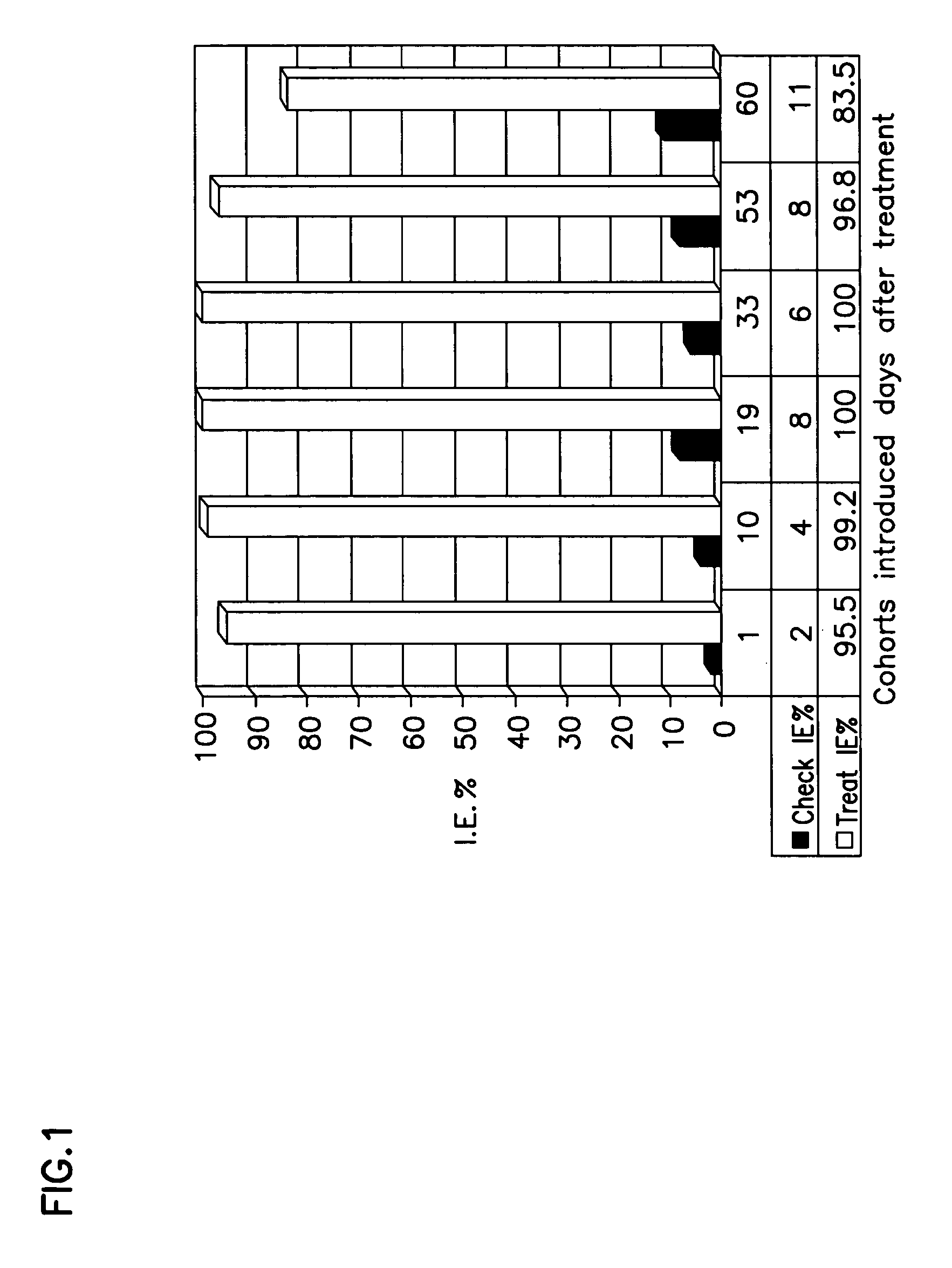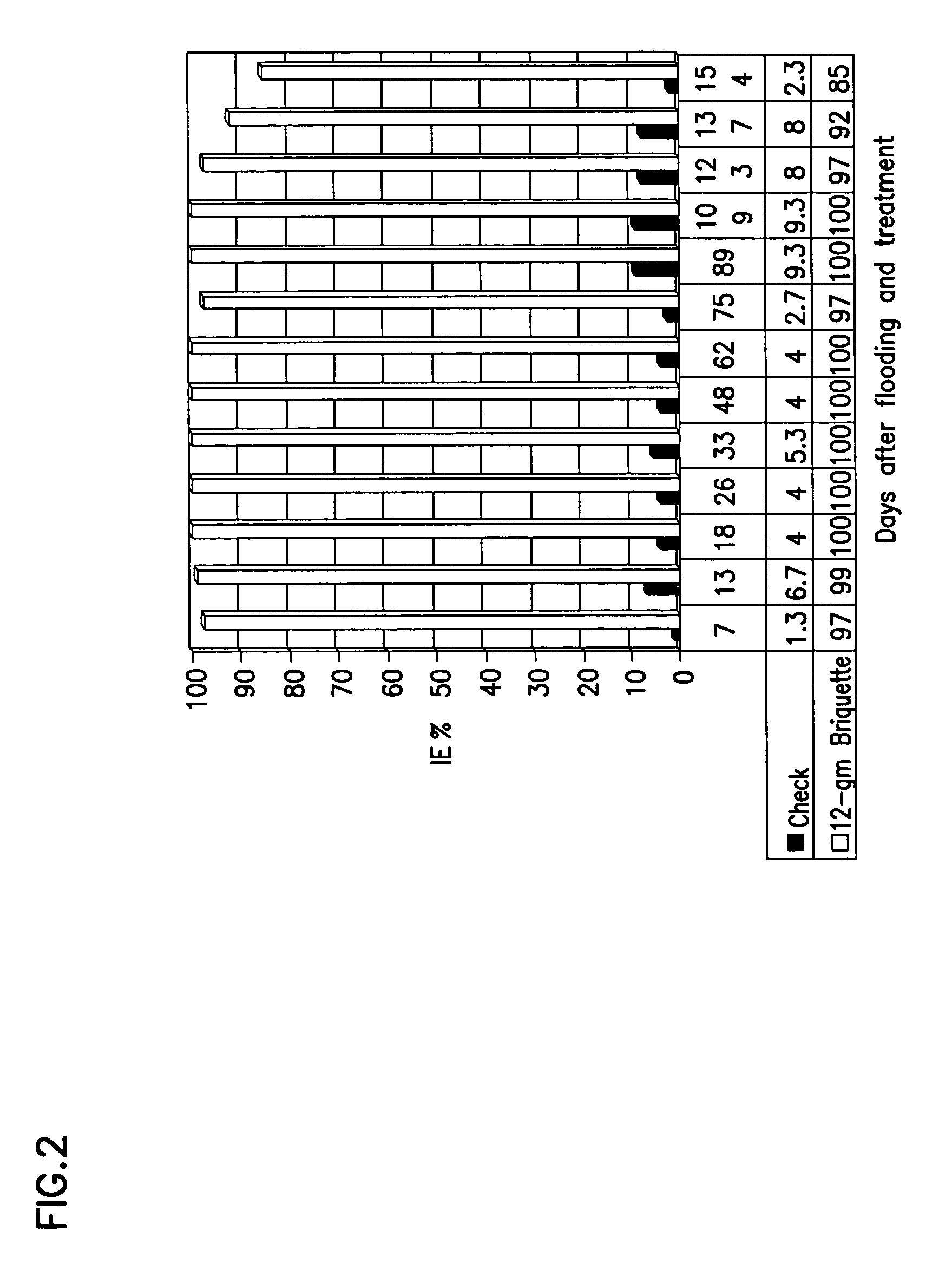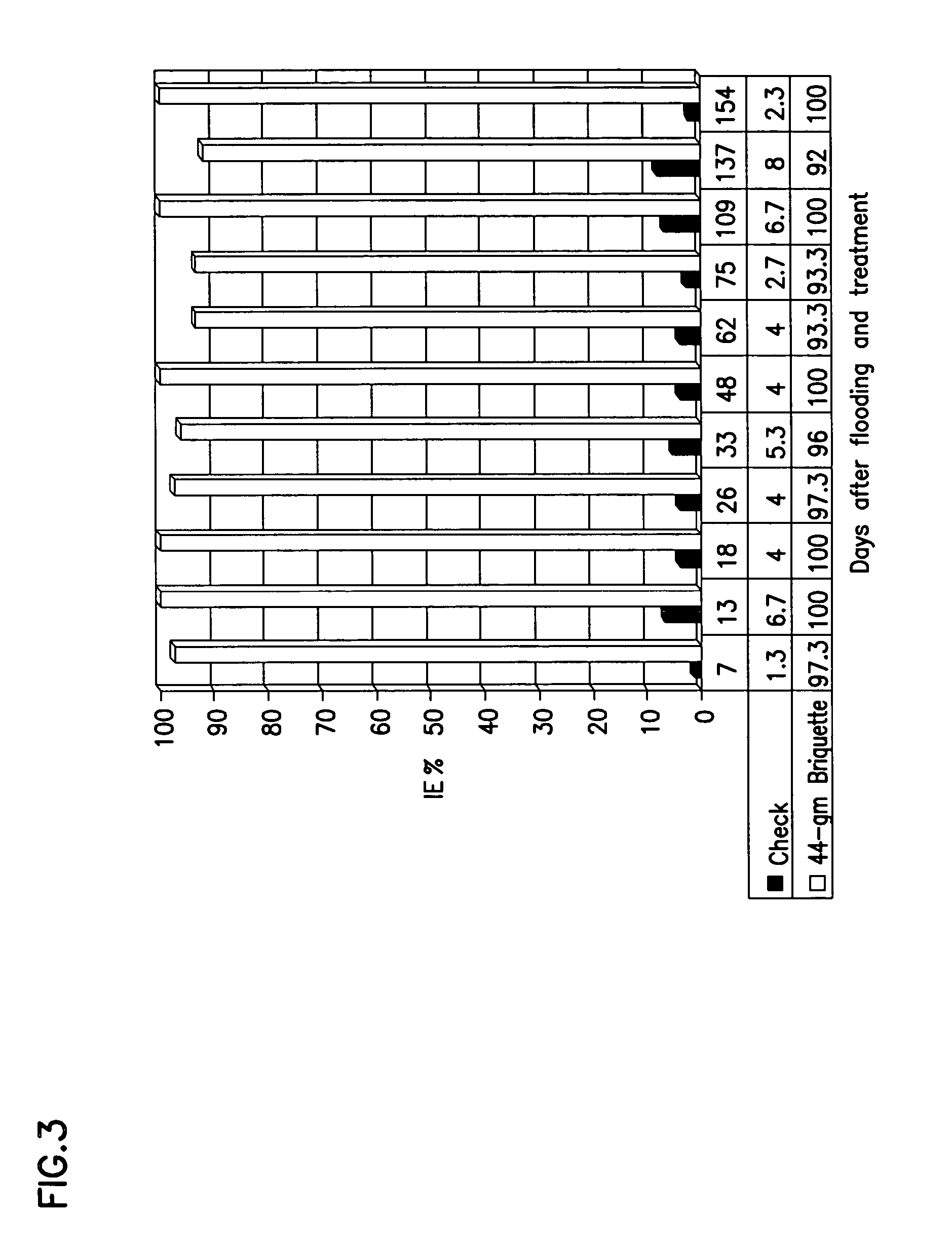Sustained release microbial insect control composition and means
a technology of insect control and sustained release, which is applied in the direction of biocide, animal husbandry, botany apparatus and processes, etc., can solve the problems of inability to disperse with mechanical equipment, high cost of insect control of public health, and inability to achieve long-term effective means of mosquito control
- Summary
- Abstract
- Description
- Claims
- Application Information
AI Technical Summary
Benefits of technology
Problems solved by technology
Method used
Image
Examples
example i
[0031]The formula for a representative solid, sinking, Bacillus thuringiensis israelensis (Bti), sustained release composition is:
[0032]
IngredientW / W %Plaster of Paris50.00Water36.20Accelerator1.00Bti5.00Floatation7.80(Polypropylene) Powder
[0033]The physical properties of low-density polypropylene powder suitable to use as a buoyant vehicle, include a particle size range of 1 to 10,000 microns, more preferably 5 to 1000 and most preferably 10 to 500 microns. The common polypropylene density ranges from 0.86 to 0.91 gram / cubic centimeter. Suitable densities include any density less than 1.0 capable of being loaded with particulate microbial active ingredient, the combination of which when soaked in water >24 hours demonstrates a specific gravity of less than 1.0.
[0034]The composition is prepared by weighing 5 lbs. of the Bti microbial active ingredient to which is added 17 lbs. of de-ionized water. The Bti is then mixed thoroughly to prepare a aqueous slurry. Then 7.8 lbs. of Accurel...
example ii
[0036]The formula for a representative solid, sinking, Bacillus sphericus (Bsph) sustained release composition is:
[0037]
IngredientW / W %Plaster of Paris50.00Water36.20Accelerator1.00Bsph5.00Accurel Powder7.80
[0038]The composition is prepared by weighing 5 lbs. of the Bsph microbial active ingredient to which is added 17 lbs. of de-ionized water. The Bsph is then mixed thoroughly to prepare an aqueous slurry. Then 7.8 lbs. of Accurel polypropylene powder is placed in a mixing vessel. The Bsph slurry is then added and the combination blended well with a mixer and a vacuum is drawn on the mixture to pull the Bsph slurry into the polymer void space. The loaded powder is then dried, and mechanically ground back to the initial size of the polymer powder.
[0039]Then 50 lbs. of Plaster of Paris is placed into a mixing vessel with 36.2 lbs. of deionized water is added. The plaster is mixed thoroughly with a 1750 rpm mixer for 5 minutes. Then 12.8 lbs. of Bsph loaded polymer powder and 1 lb. of...
example iii
[0040]The formula for a representative solid, sinking, Bacillus thuringiensis israelensis (Bti), sustained release composition is:
[0041]
IngredientW / W %Plaster of Paris50.00Water36.20Accelerator1.00Bti5.00Propyltex Powder7.80
[0042]The composition is prepared by weighing 29 lbs. of a Bti microbial active ingredient liquid concentrate. The Bti liquid concentrate is then mixed thoroughly with 7.8 lbs. of Propyltex polypropylene powder in a mixing vessel. The combined slurry is then blended well with a mixer. The loaded powder is then dried, and mechanically ground back to a <100 micron powder.
[0043]Then 50 lbs. of Plaster of Paris is placed into a mixing vessel with 36.2 lbs. of de-ionized water is added. The plaster is mixed thoroughly with a 1750 rpm mixer for 5 minutes. Then 12.8 lbs. of Bti loaded polymer powder and 1 lb. of plaster accelerator is added to the slurry and blended well. The combined slurry is then placed in briquette molds to shape the final product form, where it set...
PUM
 Login to View More
Login to View More Abstract
Description
Claims
Application Information
 Login to View More
Login to View More - R&D
- Intellectual Property
- Life Sciences
- Materials
- Tech Scout
- Unparalleled Data Quality
- Higher Quality Content
- 60% Fewer Hallucinations
Browse by: Latest US Patents, China's latest patents, Technical Efficacy Thesaurus, Application Domain, Technology Topic, Popular Technical Reports.
© 2025 PatSnap. All rights reserved.Legal|Privacy policy|Modern Slavery Act Transparency Statement|Sitemap|About US| Contact US: help@patsnap.com



